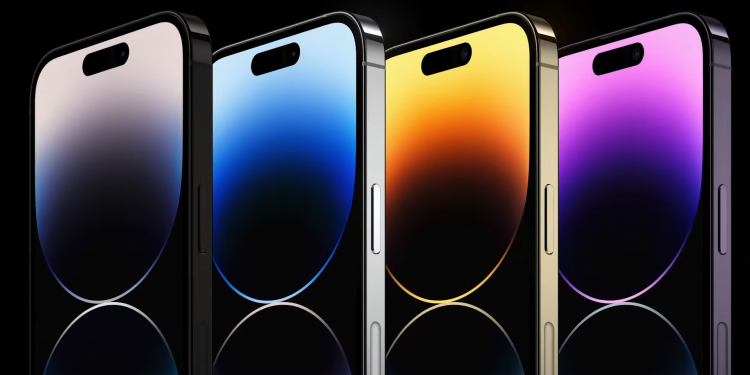When the iPhone 13 Pro and Pro Max series were launched last year, many pointed the lack of design upgrades with the two devices. Well, if you skipped those two hoping for a newer look, here’s Apple with the iPhone 14 Pro and iPhone 14 Pro Max along a host of upgrades across the two devices.
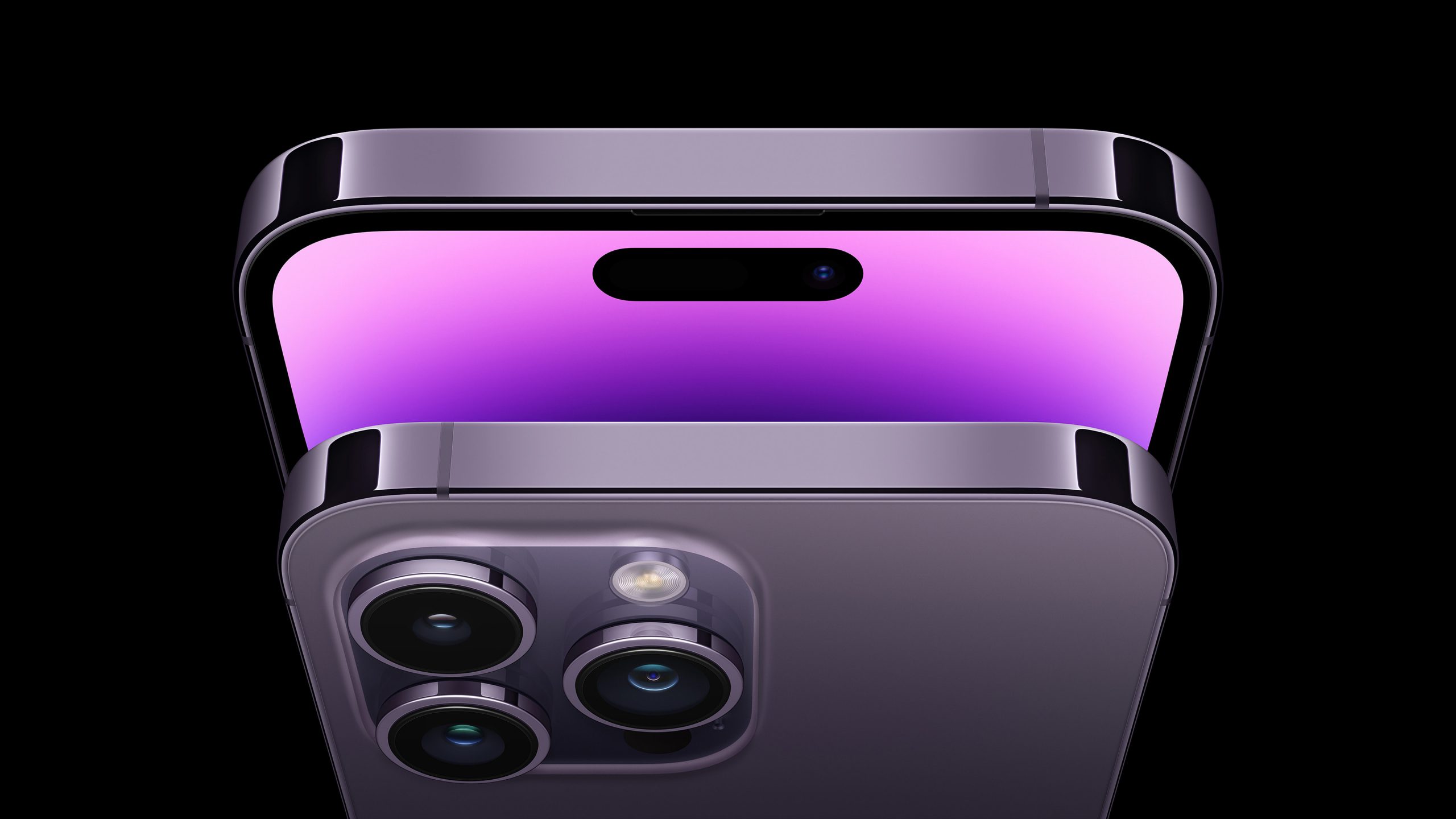
Starting off with the display, there’s no difference in terms of size, with the iPhone 14 Pro keeping the same 6.1-inch Super Retina XDR display, while the iPhone 14 Pro Max has the same 6.7-inch Super Retina XDR display too. However, they have slightly bigger resolutions, coming at 1179 x 2556p and 1290 x 2796p respectively. They also come with a 120Hz adaptive refresh rate via ProMotion, HDR support, a 2,000,000:1 contrast ratio and haptic touch.
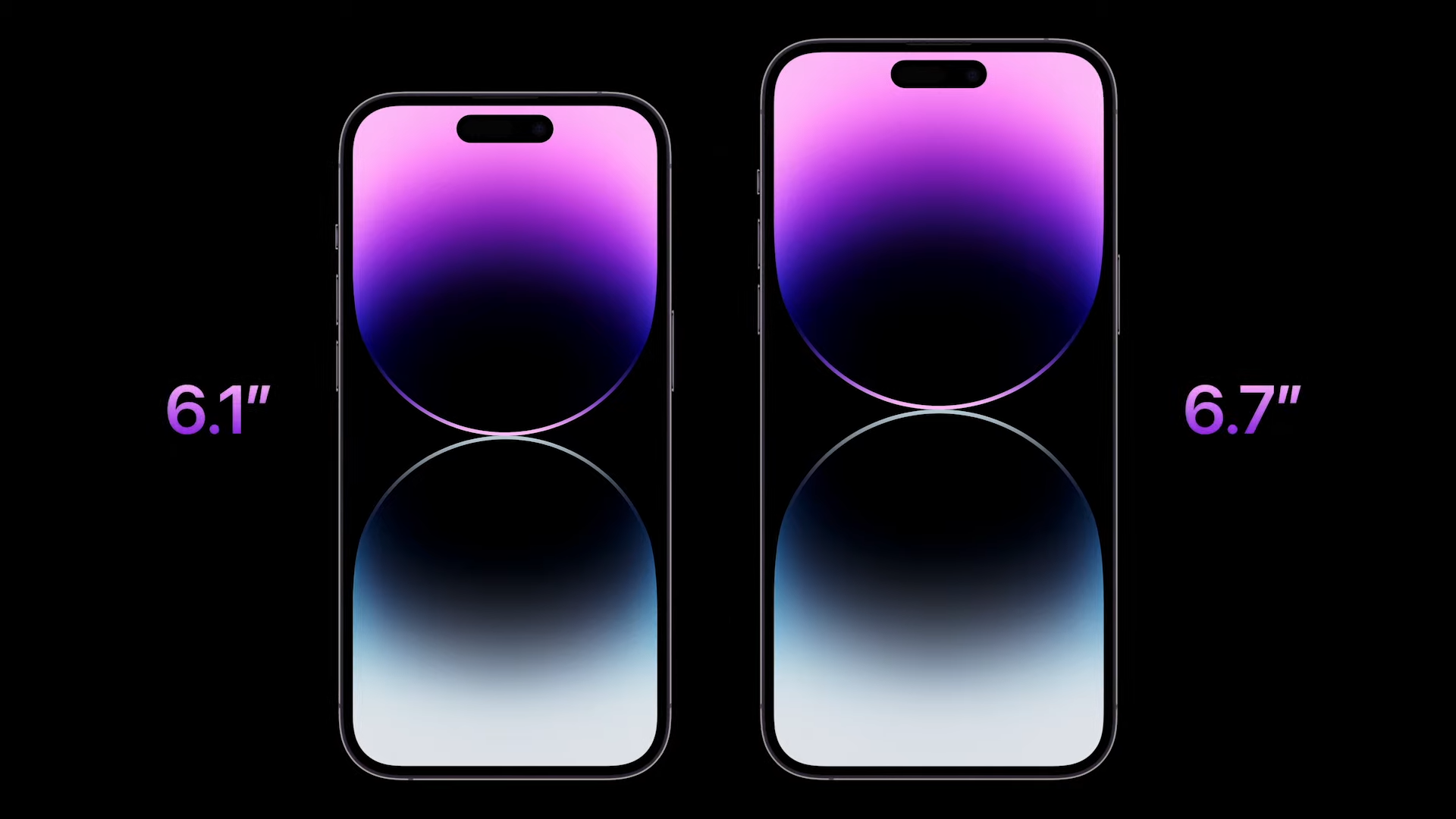

Another major upgrade comes in the form of an outdoor brightness mode that pushes the peak brightness of the display to 2,000nits; regular typical brightness maxes out at 1,000nits with HDR peak brightness at 1,600nits. Then there’s also the new always-on display; we say ‘new’, but it’s actually a feature in the Android scene for quite some time now. Nevertheless, the iPhone 14 Pro and iPhone 14 Pro Max will indeed have an always-on display feature, allowing you to set widgets and tools on the lock screen for easy access.
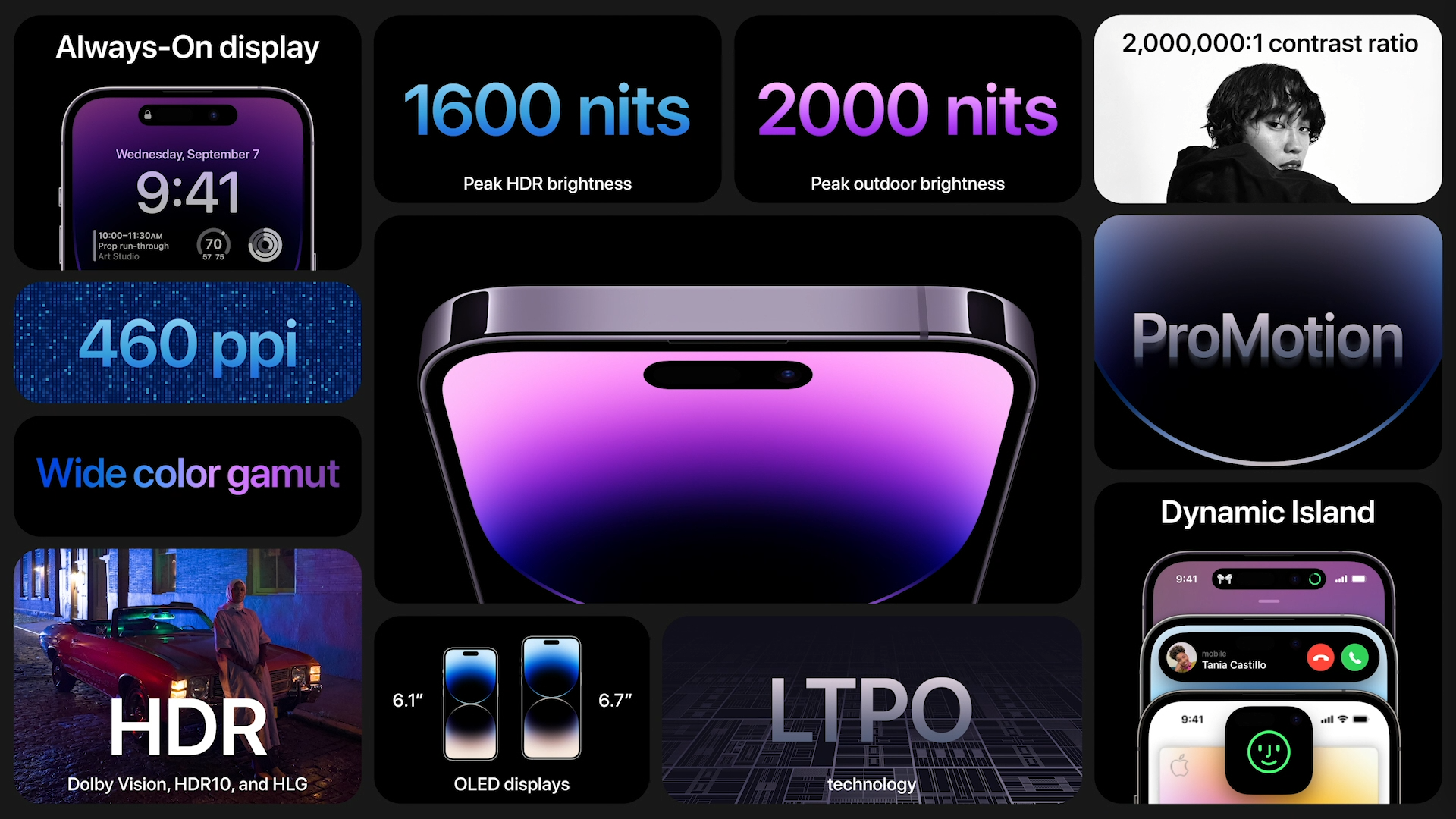
Of course, one thing we can’t possibly not mention is the new notch, or rather the lack of it. Instead, it’s been replaced by the long-rumoured pill-shaped cutout—except that it can change its shape to fit your needs. Dubbed the Dynamic Island by Apple, the cut out itself may be pill-shaped, but Apple has seamlessly integrated it into their software, allowing it to change in size to incorporate more information, widgets and tools depending on what you’re doing. It’s actually pretty slick, and you should check it out yourself here:
Under the hood, the iPhone 14 Pro and iPhone 14 Pro Max will come with the new A16 Bionic system-on-chip. Built on the 4nm process, the A16 Bionic packs a 6-core CPU with 2 performance cores and four efficiency cores along with a 5-core GPU and a 16-core Neural Engine. There’s 16 billion transistors in it, which Apple claims is ‘generations ahead’ of its rivals and is up to 40% faster than the competition, all while using just a third of the power. There’s also a new Display Engine in charge of the Dynamic Island, outdoor brightness mode and adaptive refresh rate.
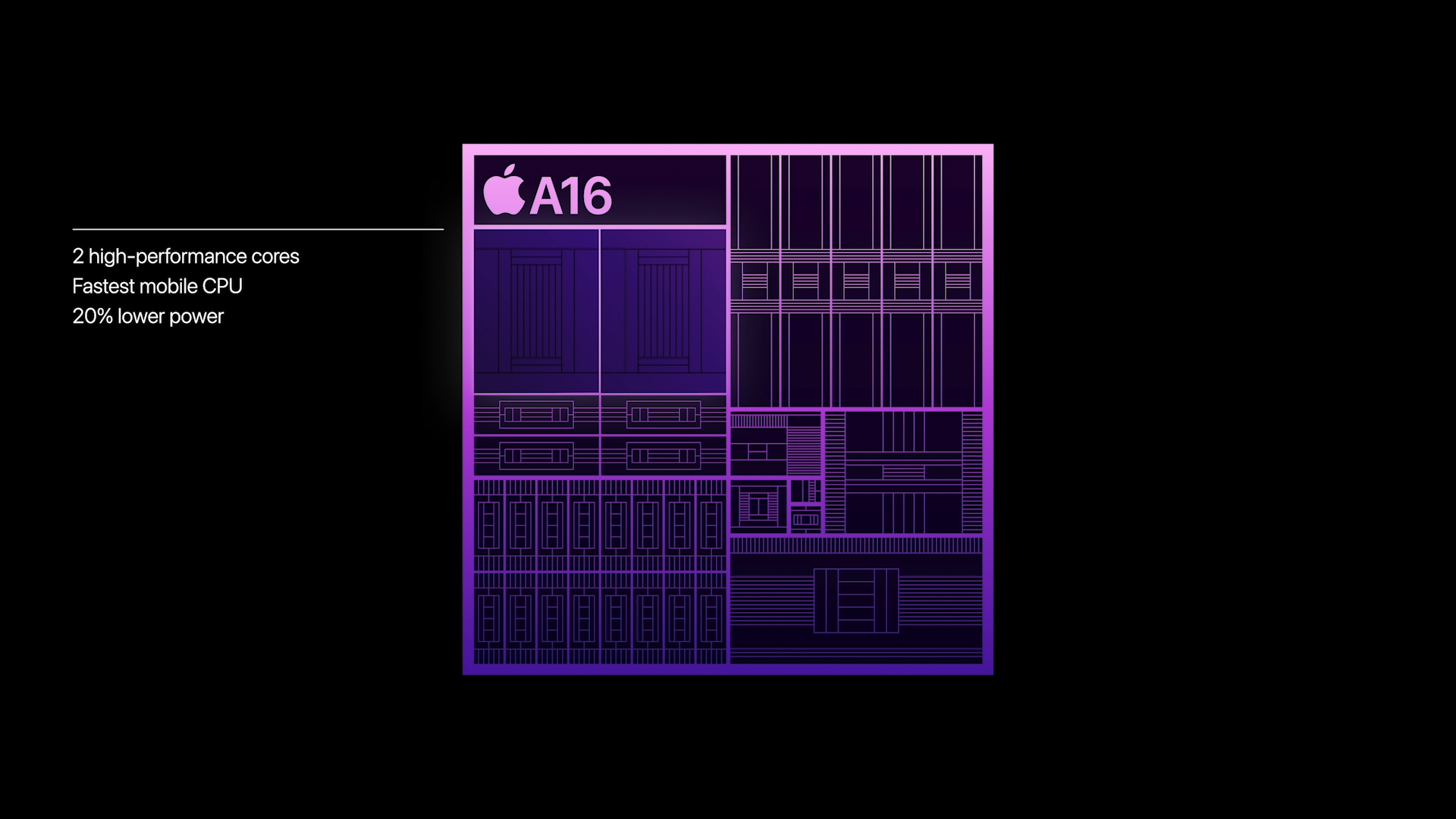
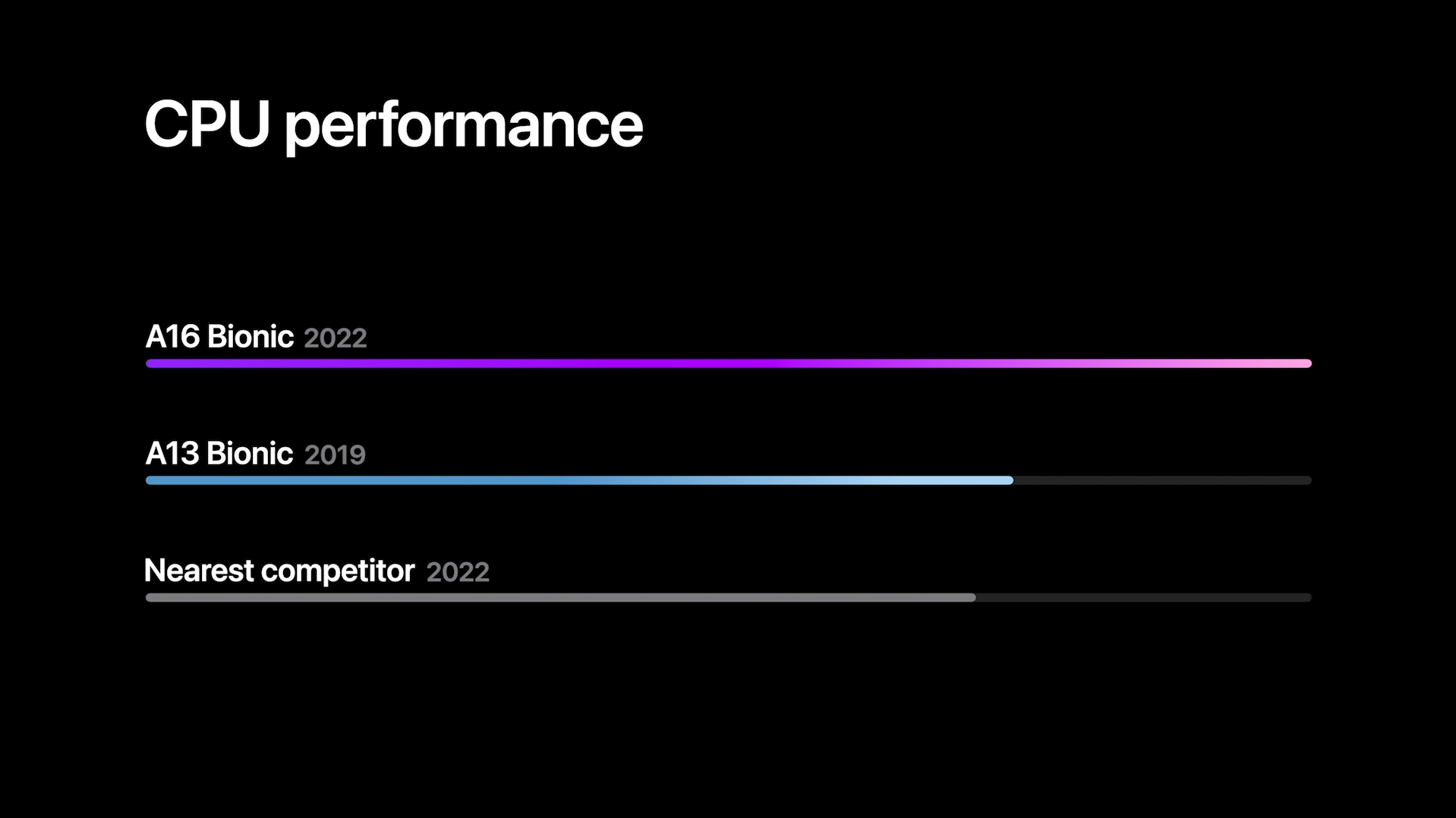
In the camera department, the iPhone 14 Pro lineup sees one of the biggest improvements to the camera setup Apple has made in the last couple of years. Gone is the triple 12MP setup of yesteryear, with Apple replacing the main camera on the iPhone 14 Pro and iPhone 14 Pro Max to a 48MP, f/1.78 camera offering a 24mm focal length as well as a 2x telephoto mode offering a 48mm focal length. Apple also claims that the sensor used is 65% larger than the one on the iPhone 13 Pro, and features what is essentially pixel binning technology to produce 12MP photos.
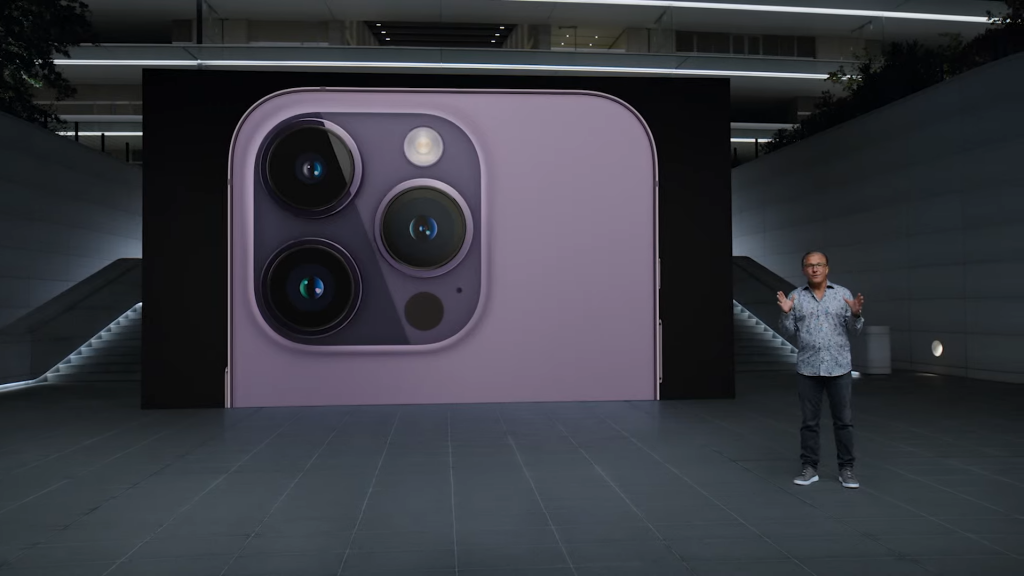
Flanking that main camera meanwhile is a new 12MP, f/2.2 ultrawide camera and a 12MP, f/2.8 telephoto lens offering 3x optical zoom. There’s also a slew of software features here, such as Deep Fusion, Macro Mode, Smart HDR4, Sensor Shift and Cinematic Mode, along with some new ones such as Action Mode and Photonic Engine. Action Mode works to stablise videos especially during intense shooting, while the Photonic Engine improves the low light performance of the cameras. The iPhone 14 Pro and iPhone 14 Pro Max will also be able to shoot Apple ProRAW in 48MP too. Sitting in the Dynamic Island cutout meanwhile is the 12MP, f/1.9 True Depth front camera.
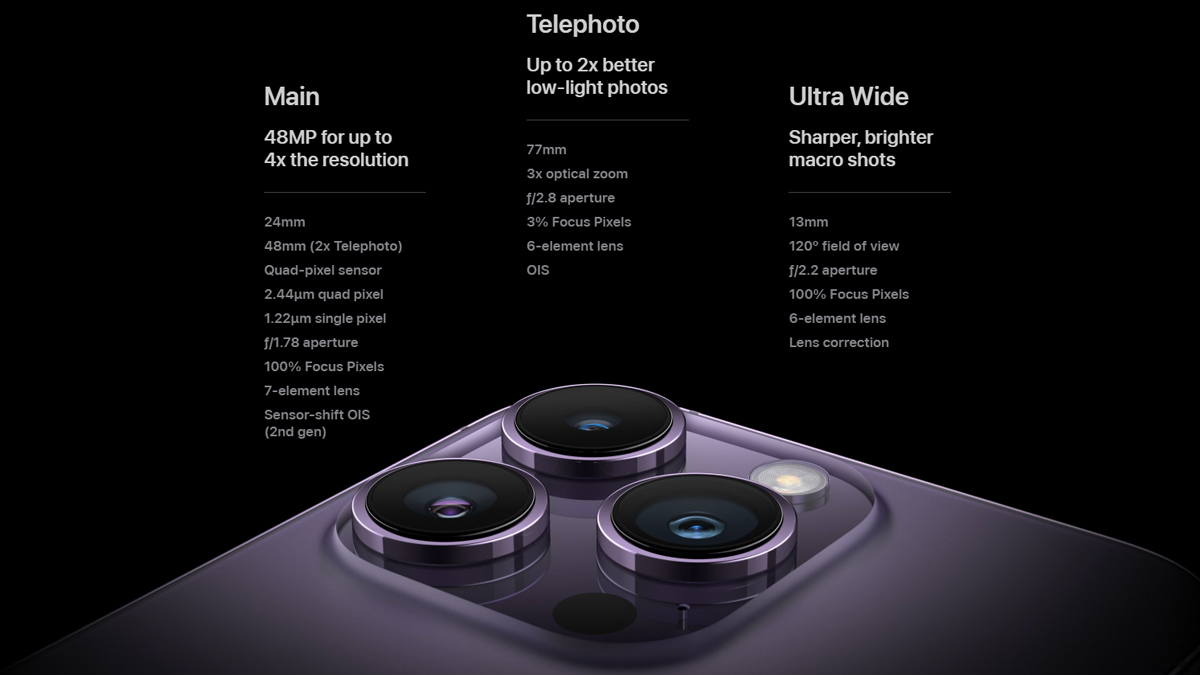
As for battery life, Apple says that you should be able to get up to 23 hours of video playback on the iPhone 14 Pro, while the iPhone 14 Pro Max offers up to 29 hours of video playback. For comparison, the iPhone 13 Pro had up to 22 hours of video playback, while you could squeeze up to 28 hours of video playback out of the iPhone 13 Pro Max. As usual though, there won’t be any charging brick in the box—just the USB-C to Lightning cable.
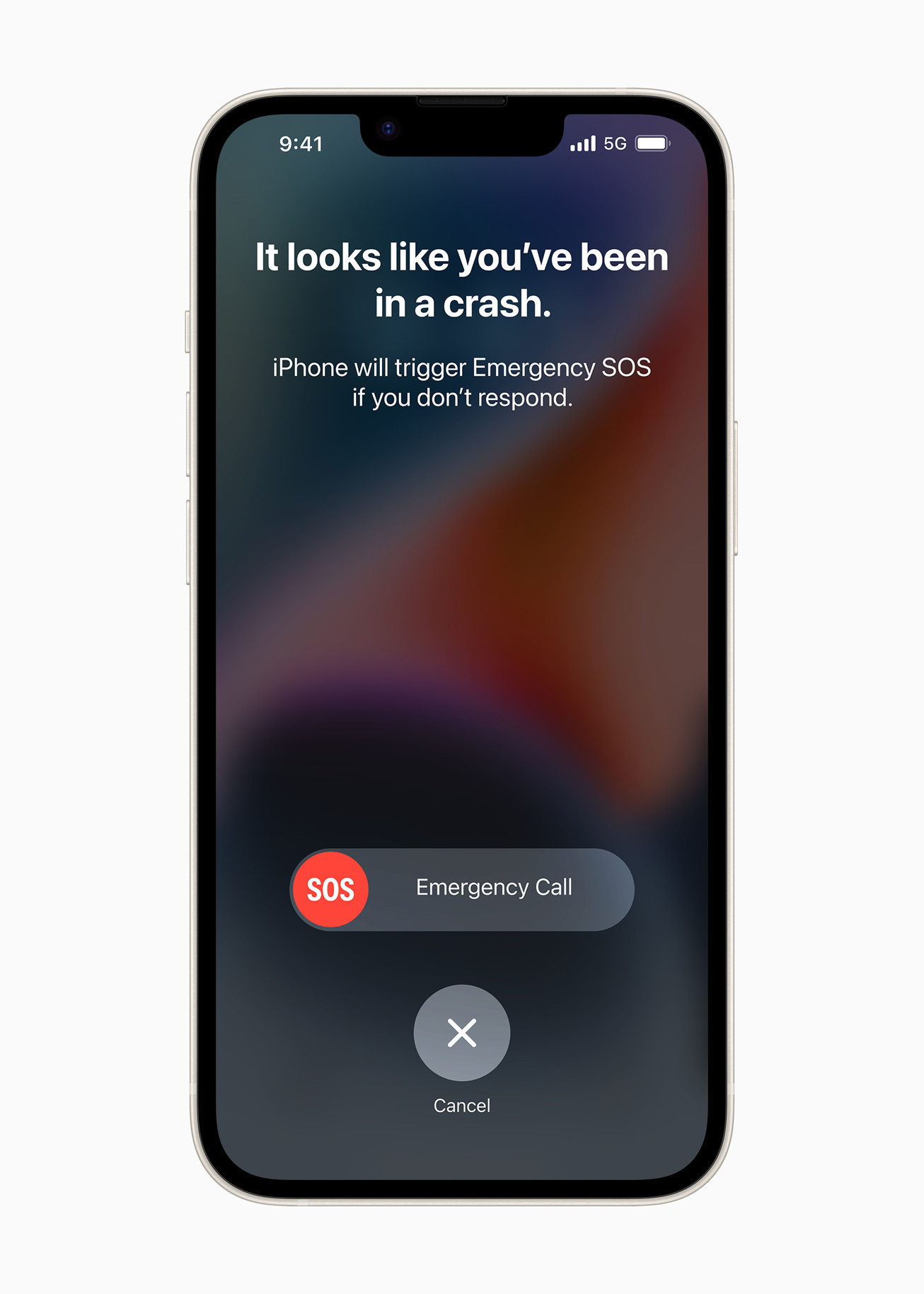
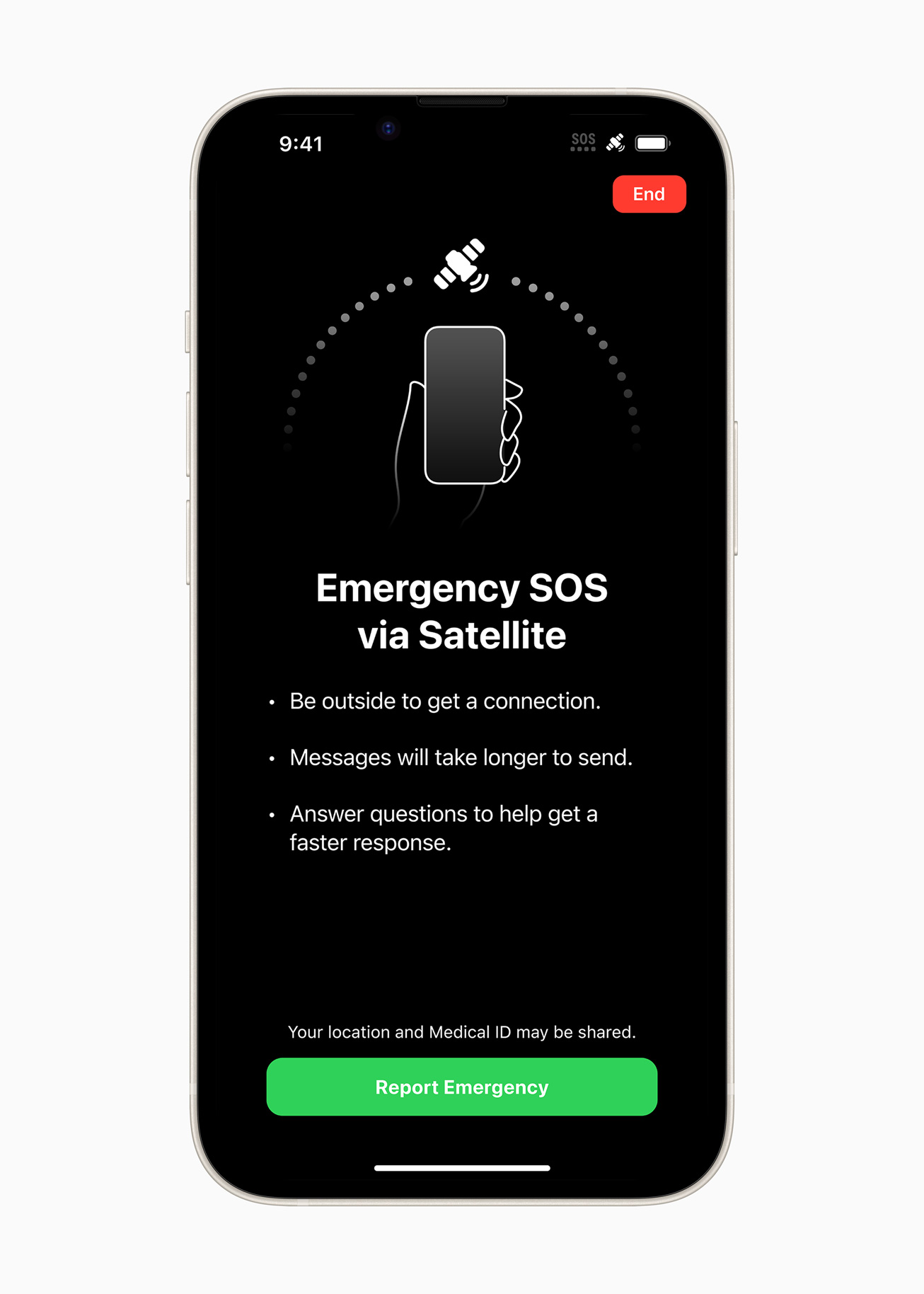
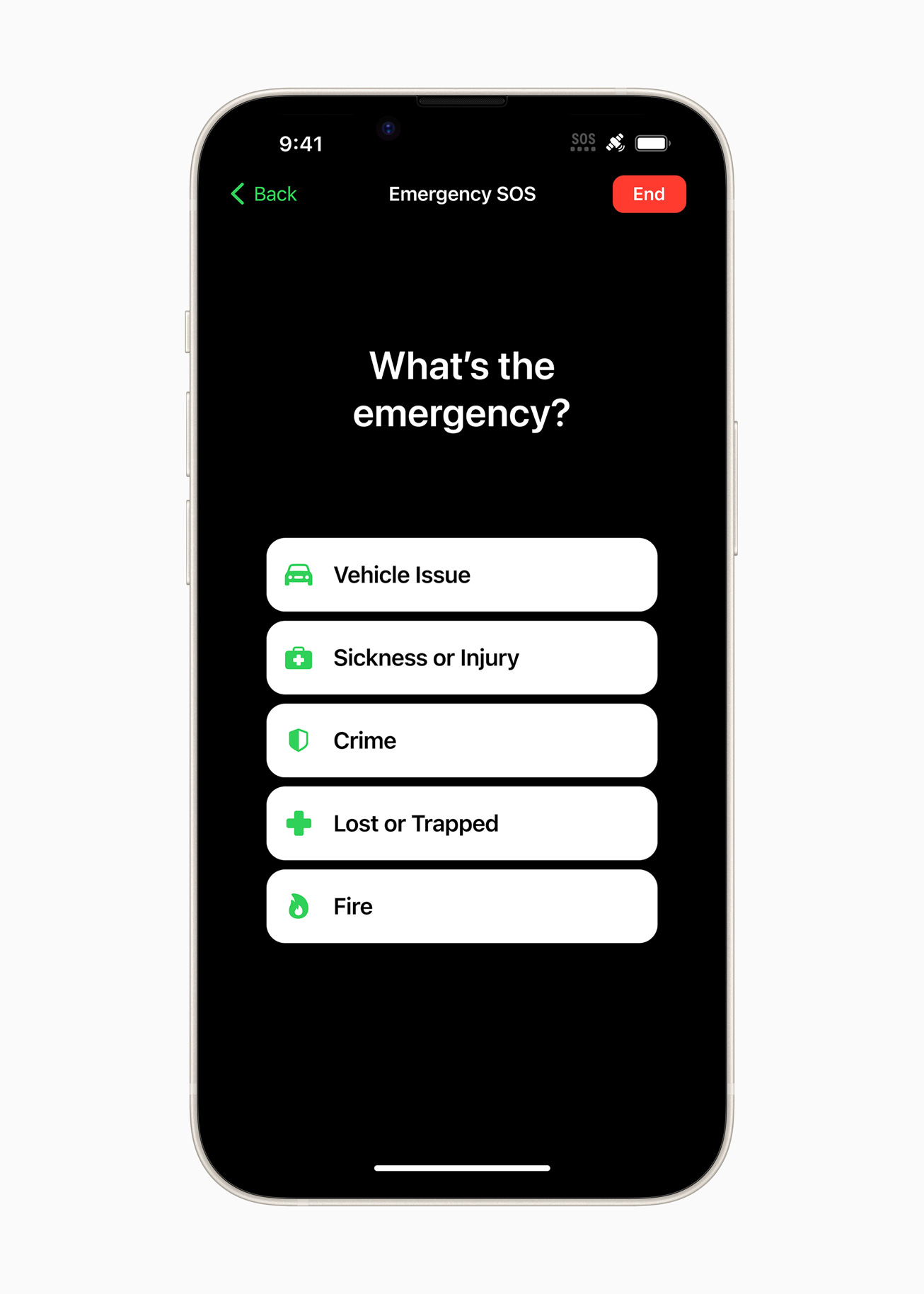
Just like its non-Pro stablemates, the iPhone 14 Pro and iPhone 14 Pro Max will also offer Emergency SOS via satellite and Crash Detection. The former is an emergency messaging tool that uses communication satellites, allowing you to get a message through even without cellular reception or a WiFi connection. It will only arrive in November to US and Canada first, with the service being free for the first two years. Crash Detection meanwhile uses a new accelerometer and high dynamic gyroscope to detect when you’ve been involved in a severe car crash. If it does detect an accident, it’ll automatically contact emergency services for help.
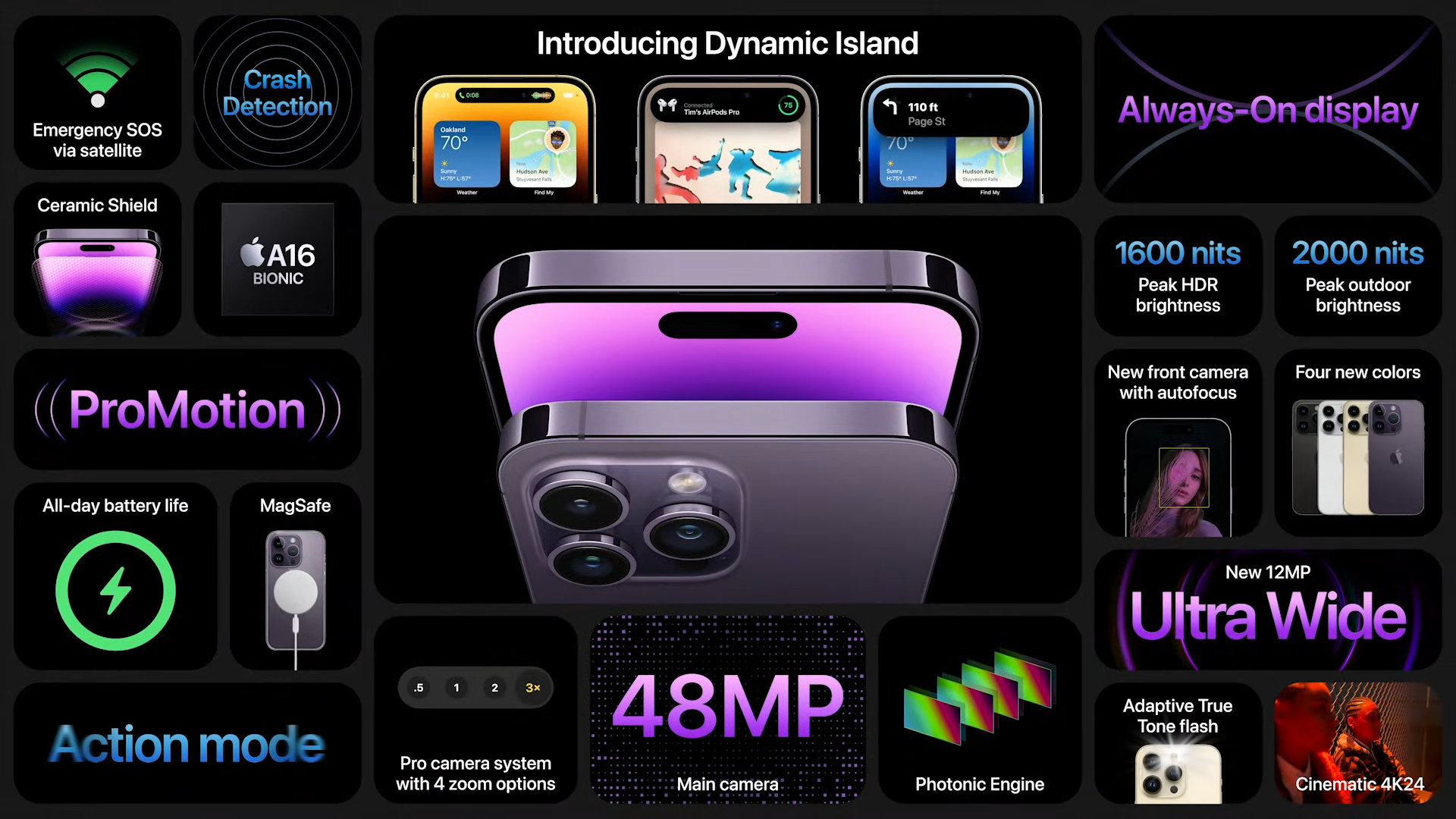
The iPhone 14 Pro will start at RM5,299, while the iPhone 14 Pro Max will start at RM5,799. They’ll be available in 128GB, 256GB, 512GB and 1TB storage options, and you’ll be able to get them in Space Black, Silver, Gold and Deep Purple colourways. It should be noted though that they are quite a bit more expensive compared to the last generation of iPhone Pro models in Malaysia, even though Apple didn’t raise its starting prices in the US. For context, the iPhone 13 Pro started at RM4,899 while the iPhone 13 Pro Max started at RM5,299.
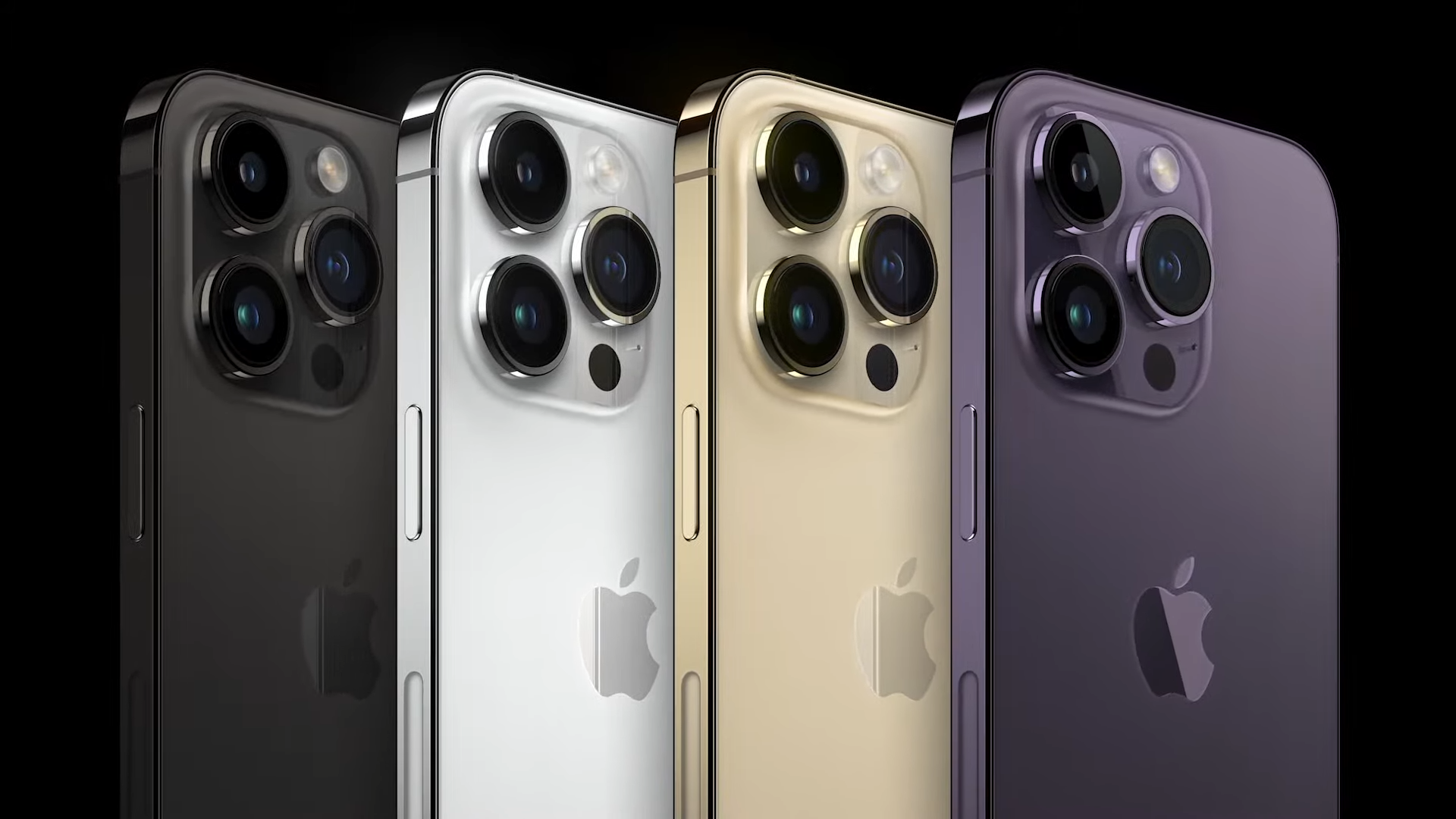
Nevertheless, if you’re keen on getting Apple’s new flagship, you’ll be able to do so starting from next Friday, 16 September, as that’s when the iPhone 14 Pro will be available for pre-order in Malaysia. For more details on the pre-order for the iPhone 14 Pro and iPhone 14 Pro Max, you can check out our other article here.

